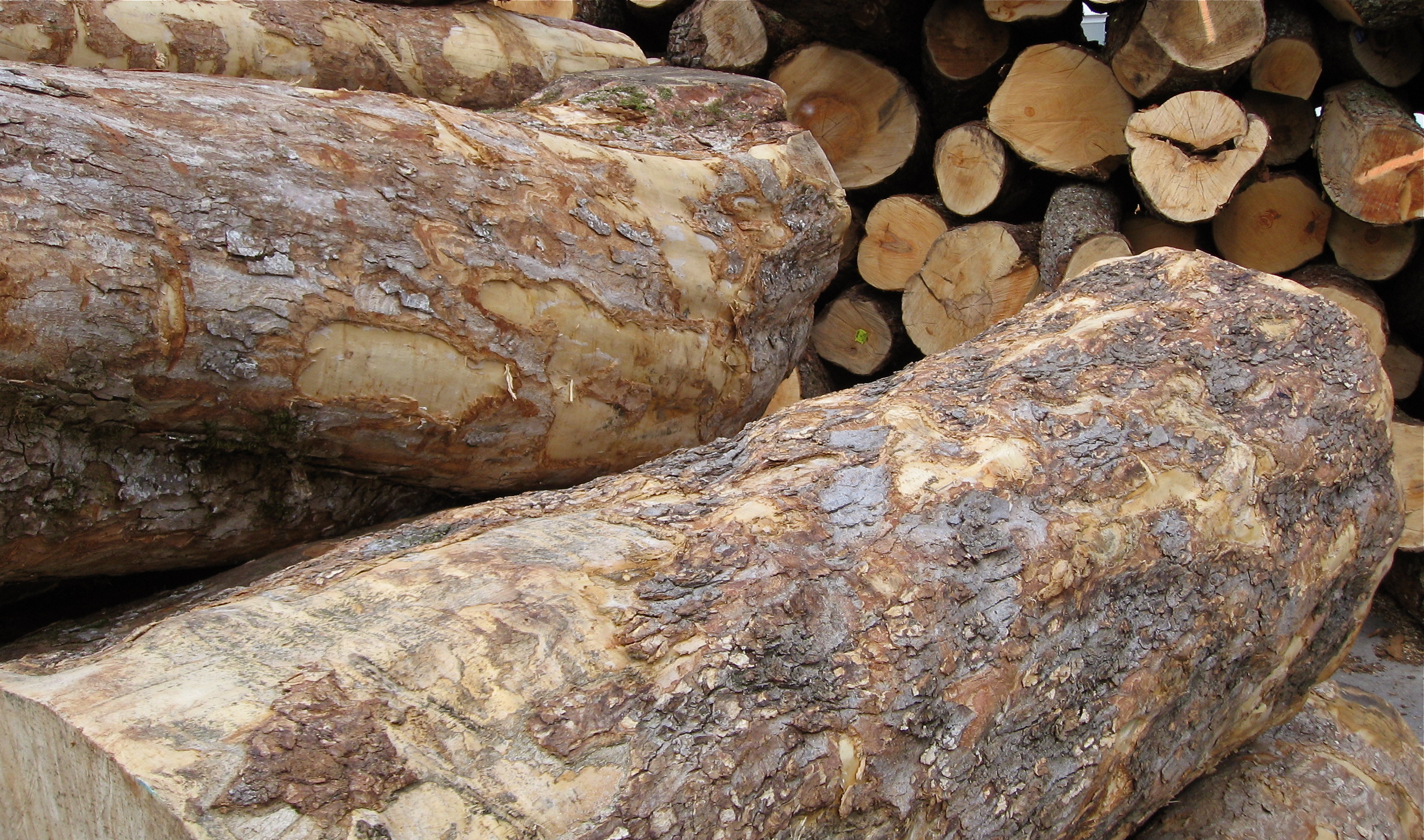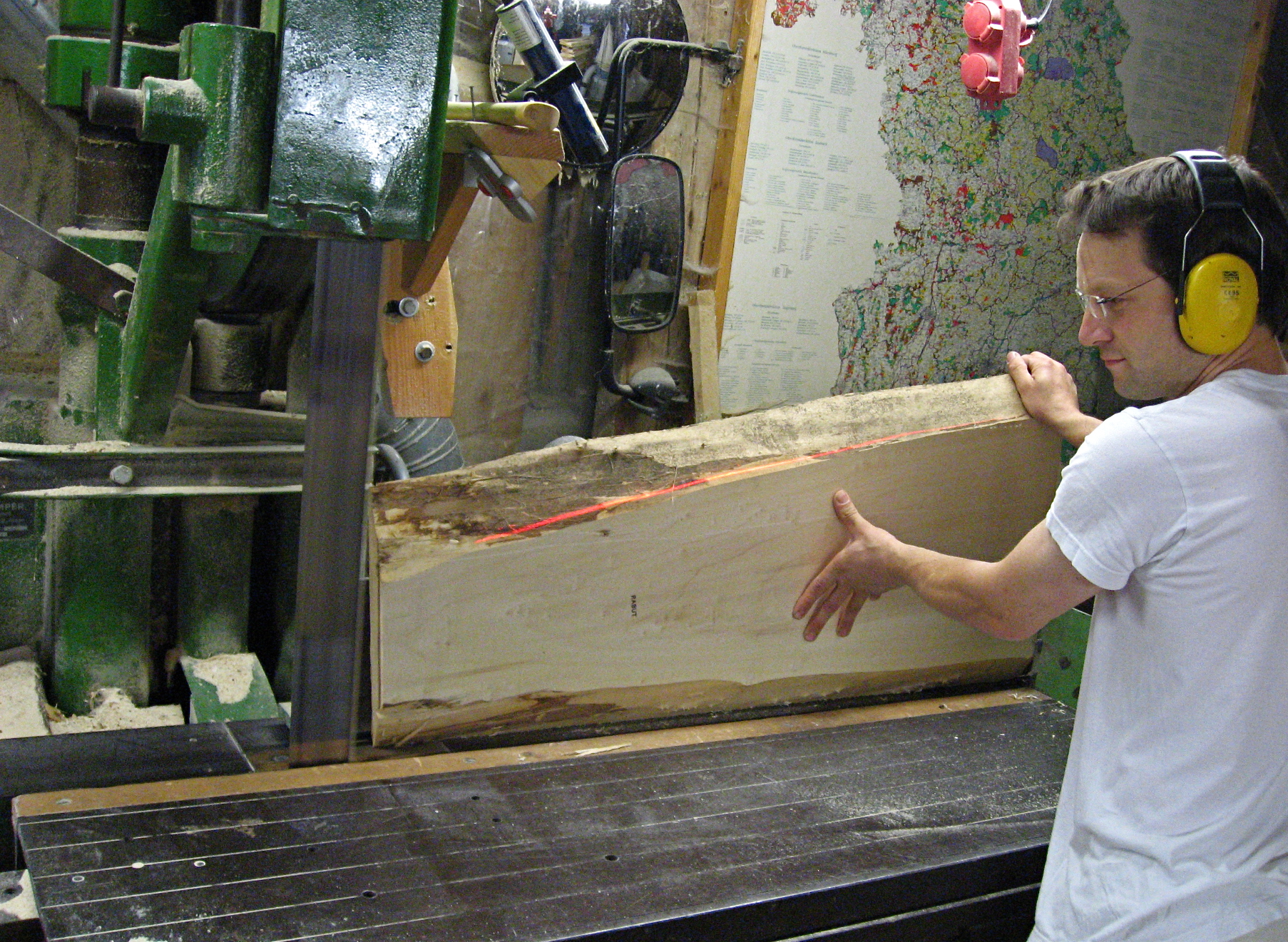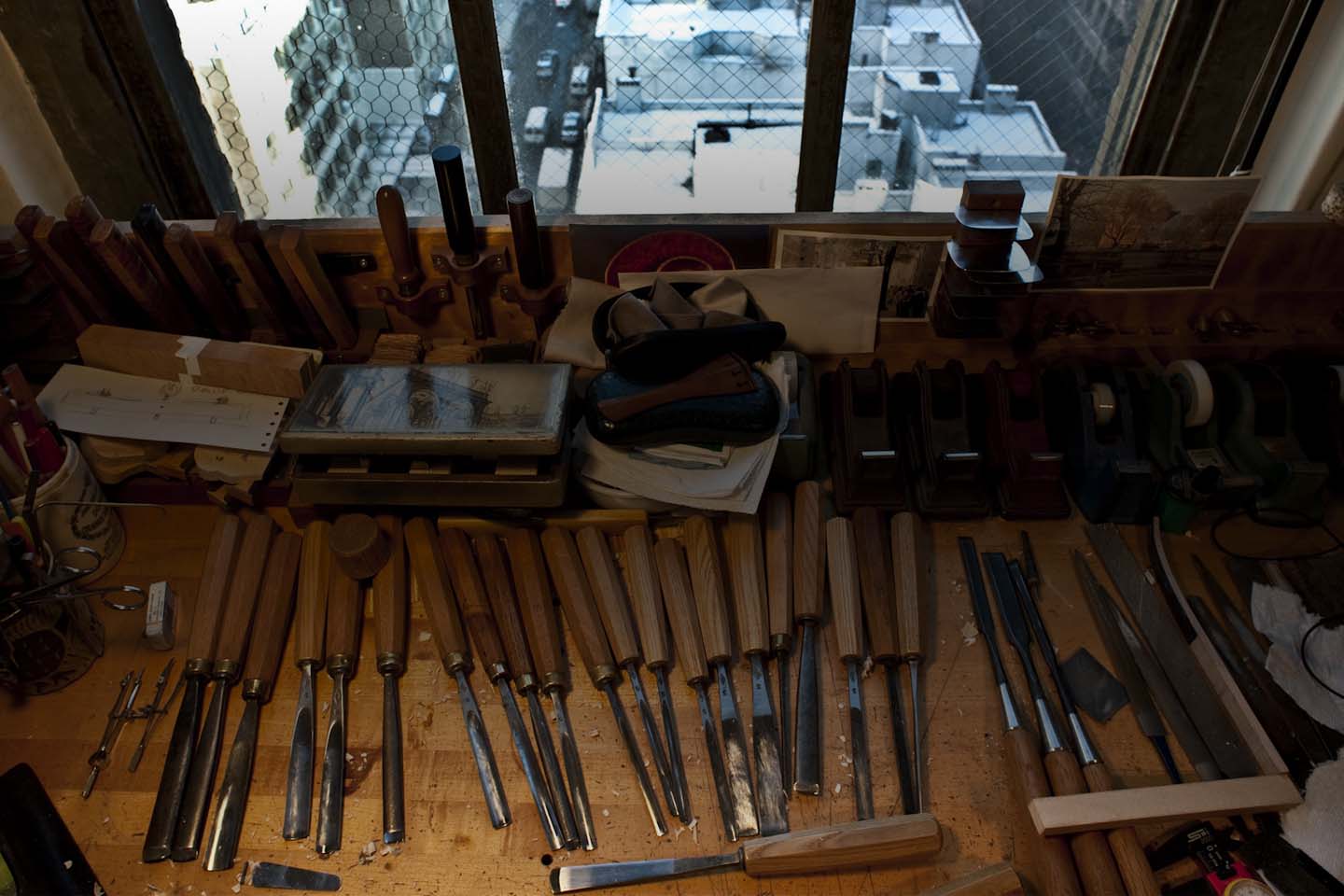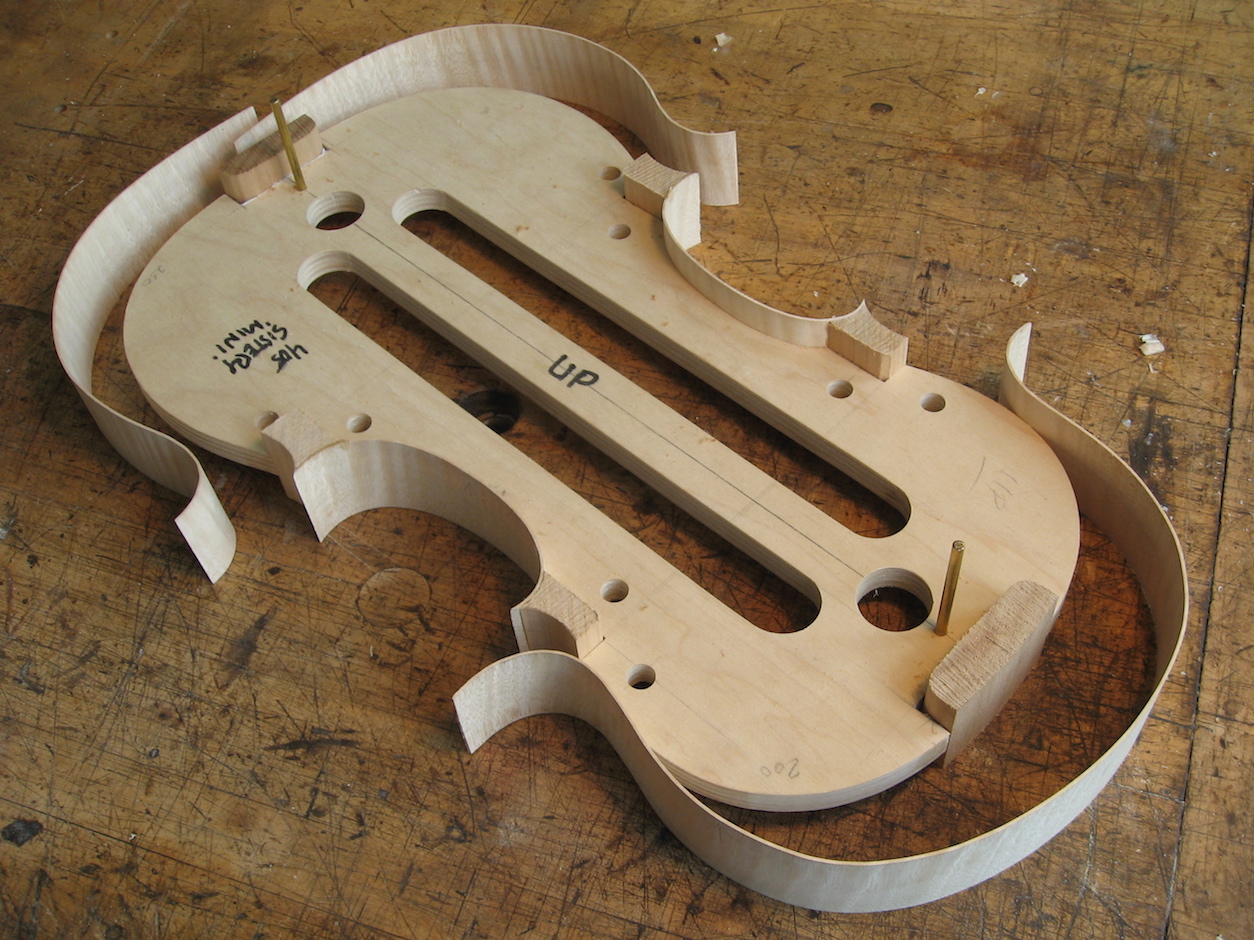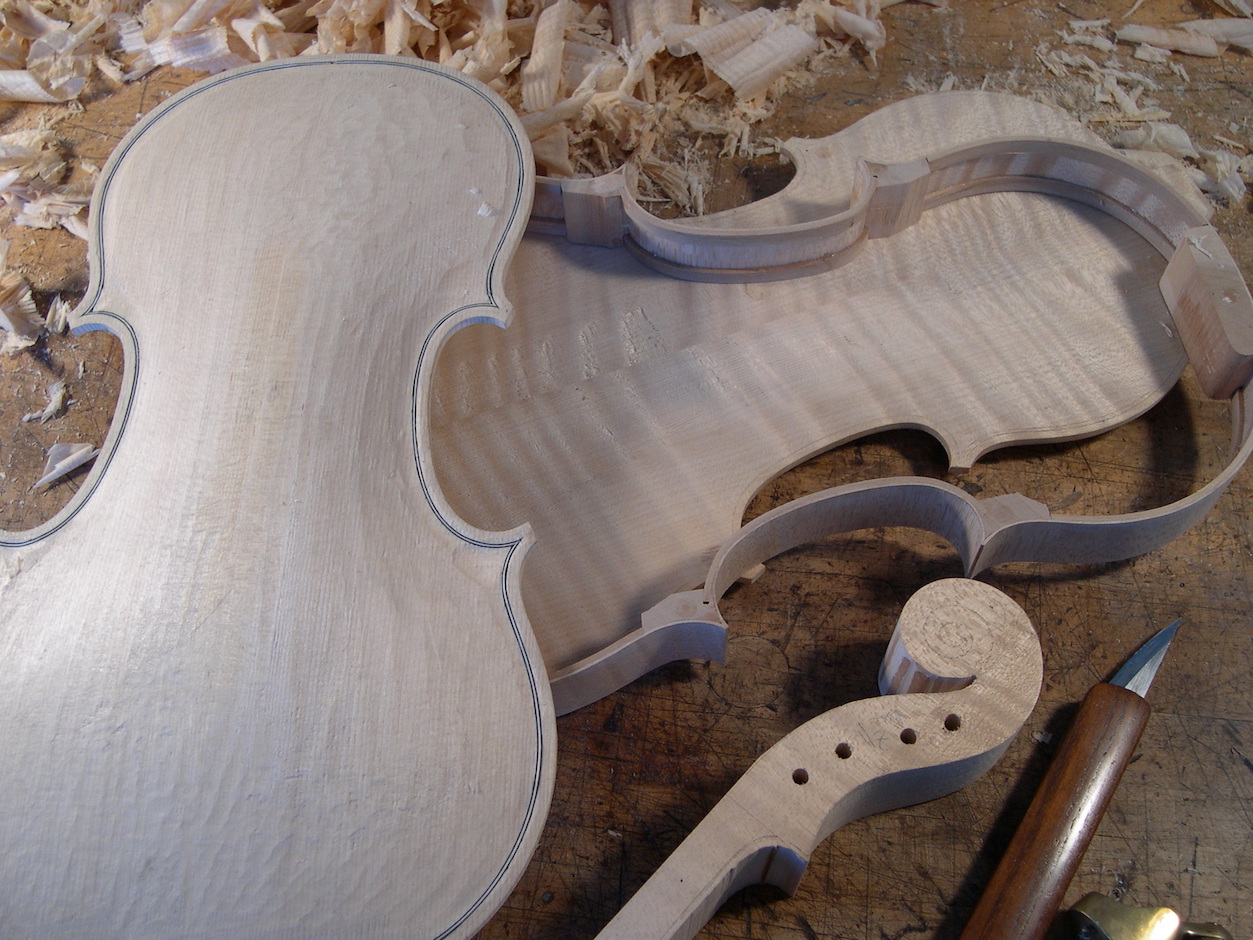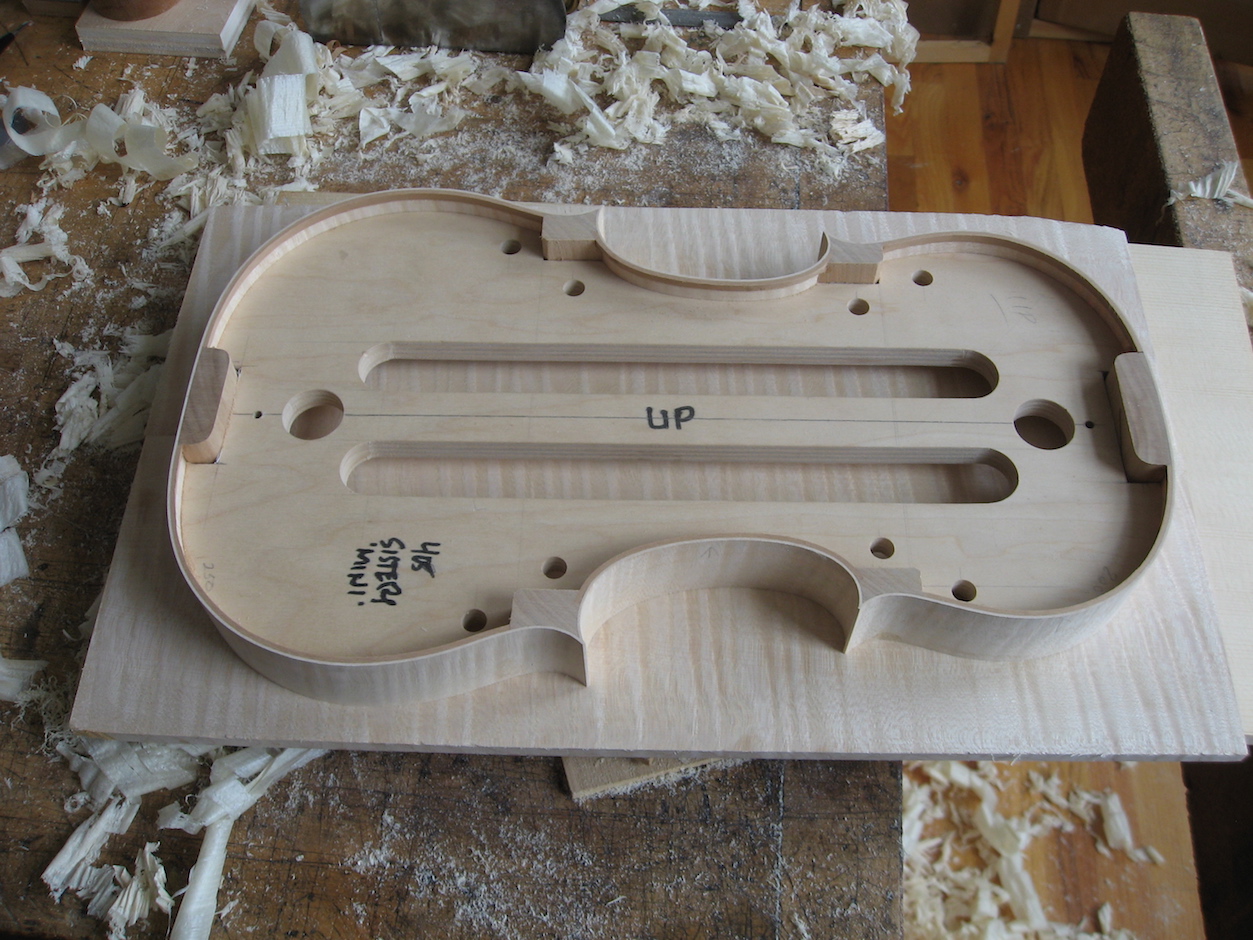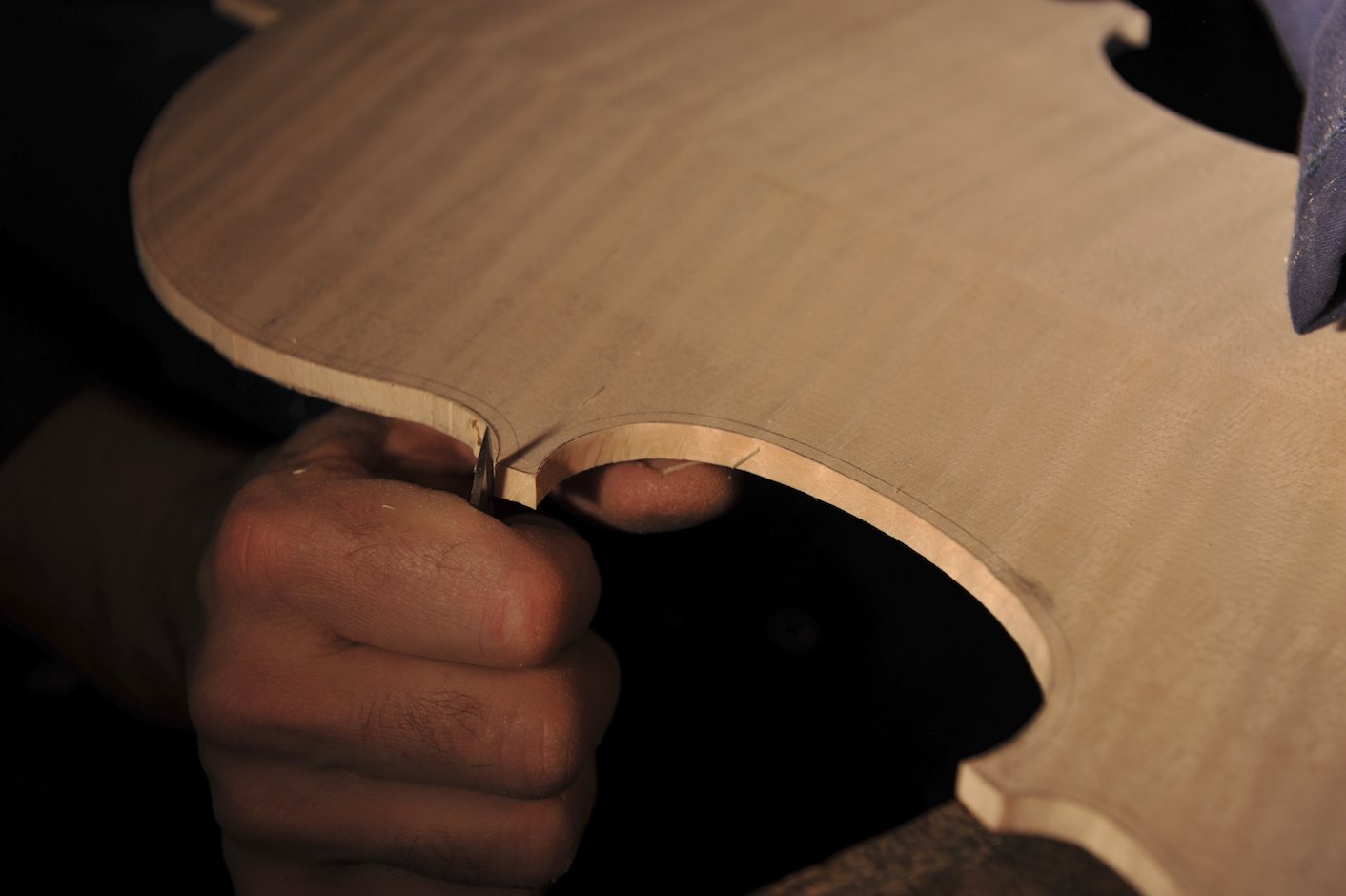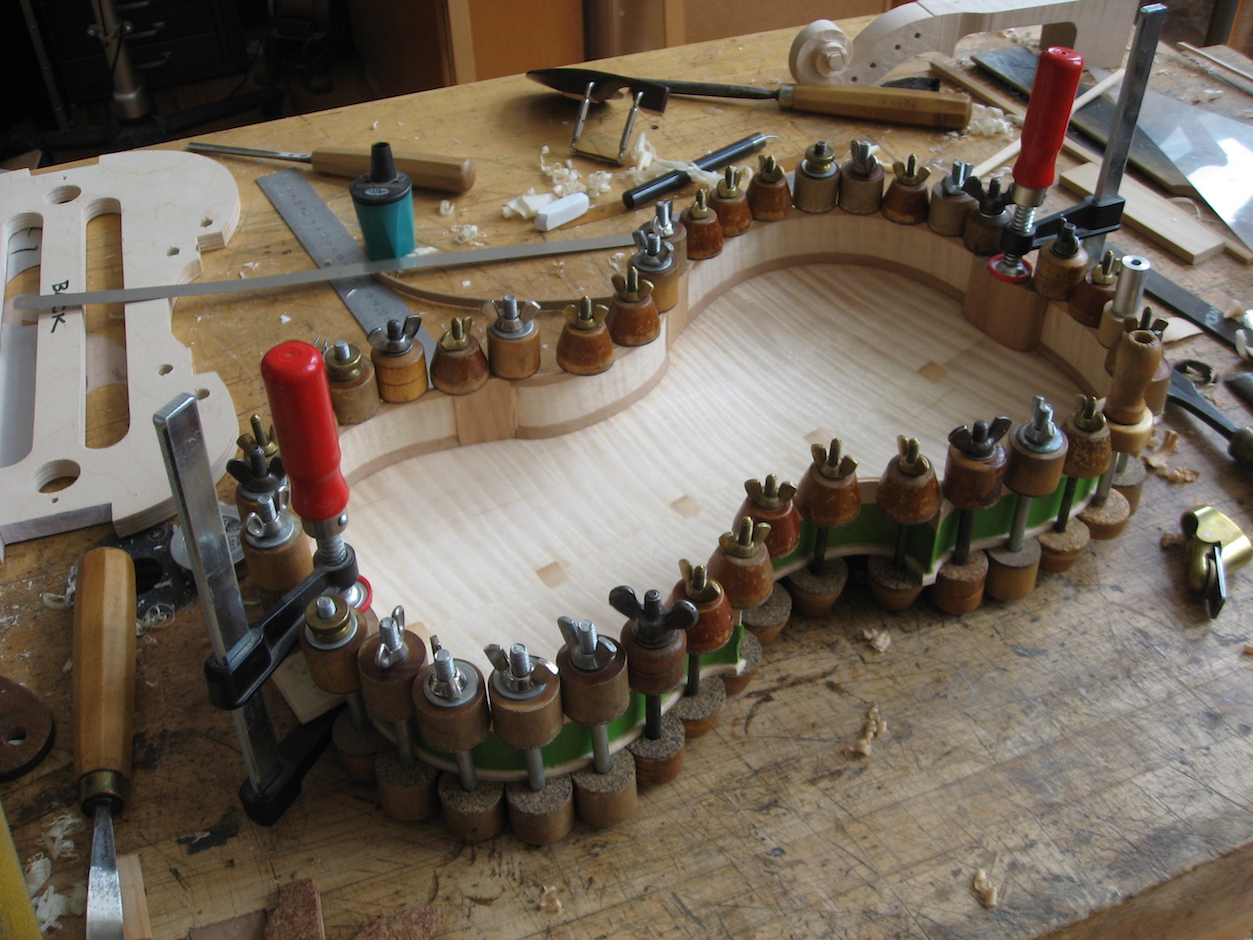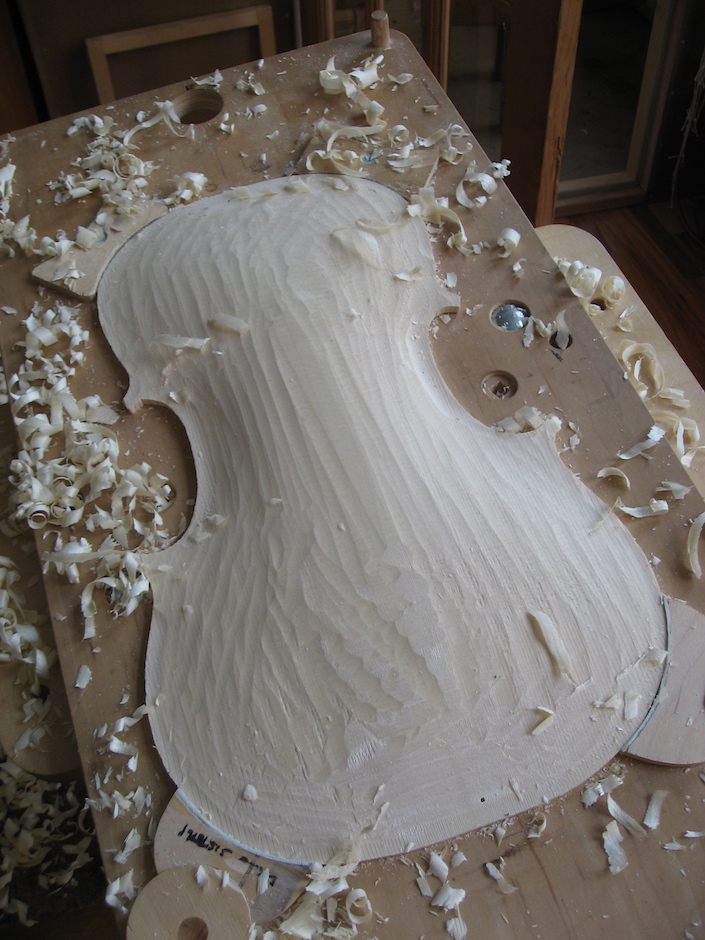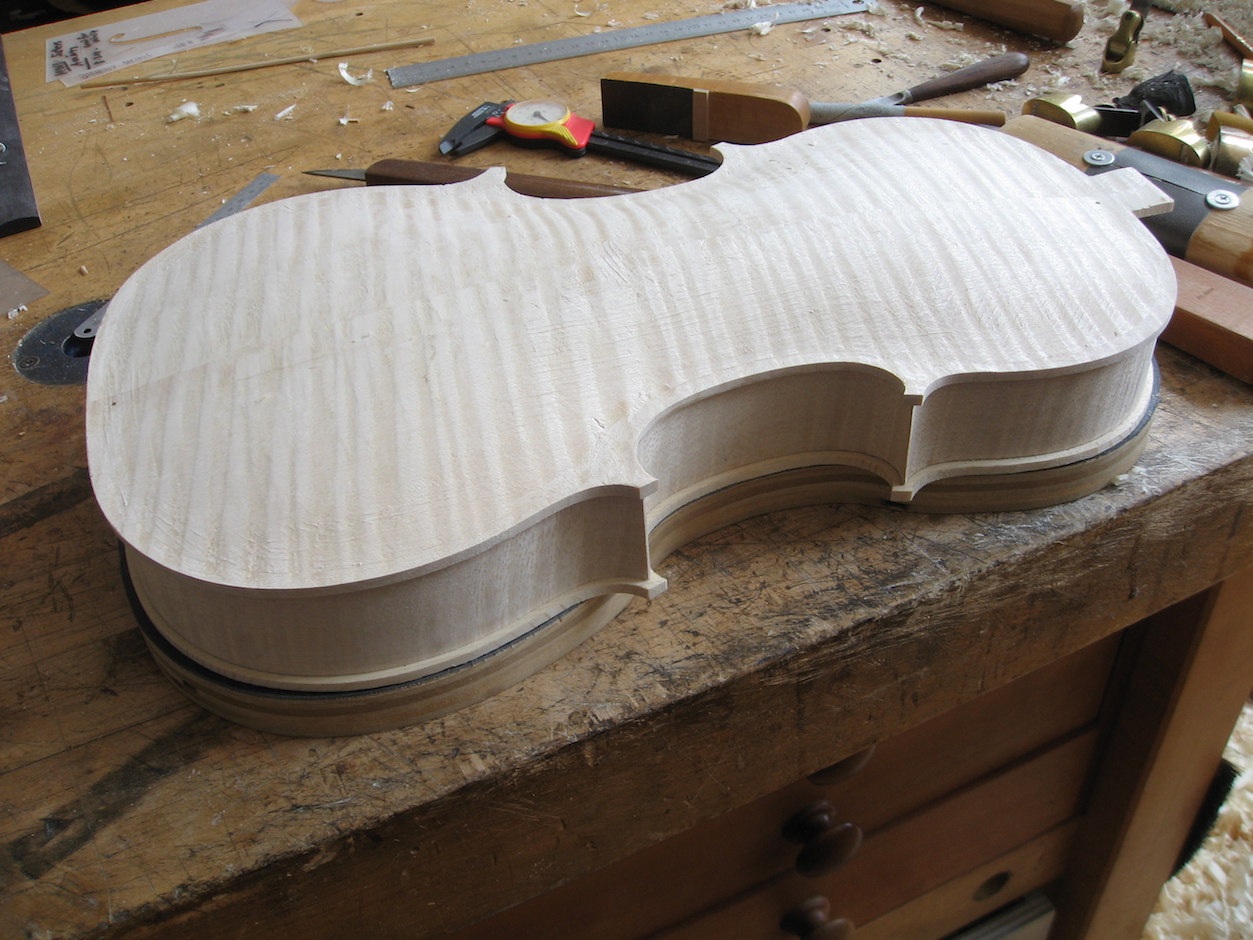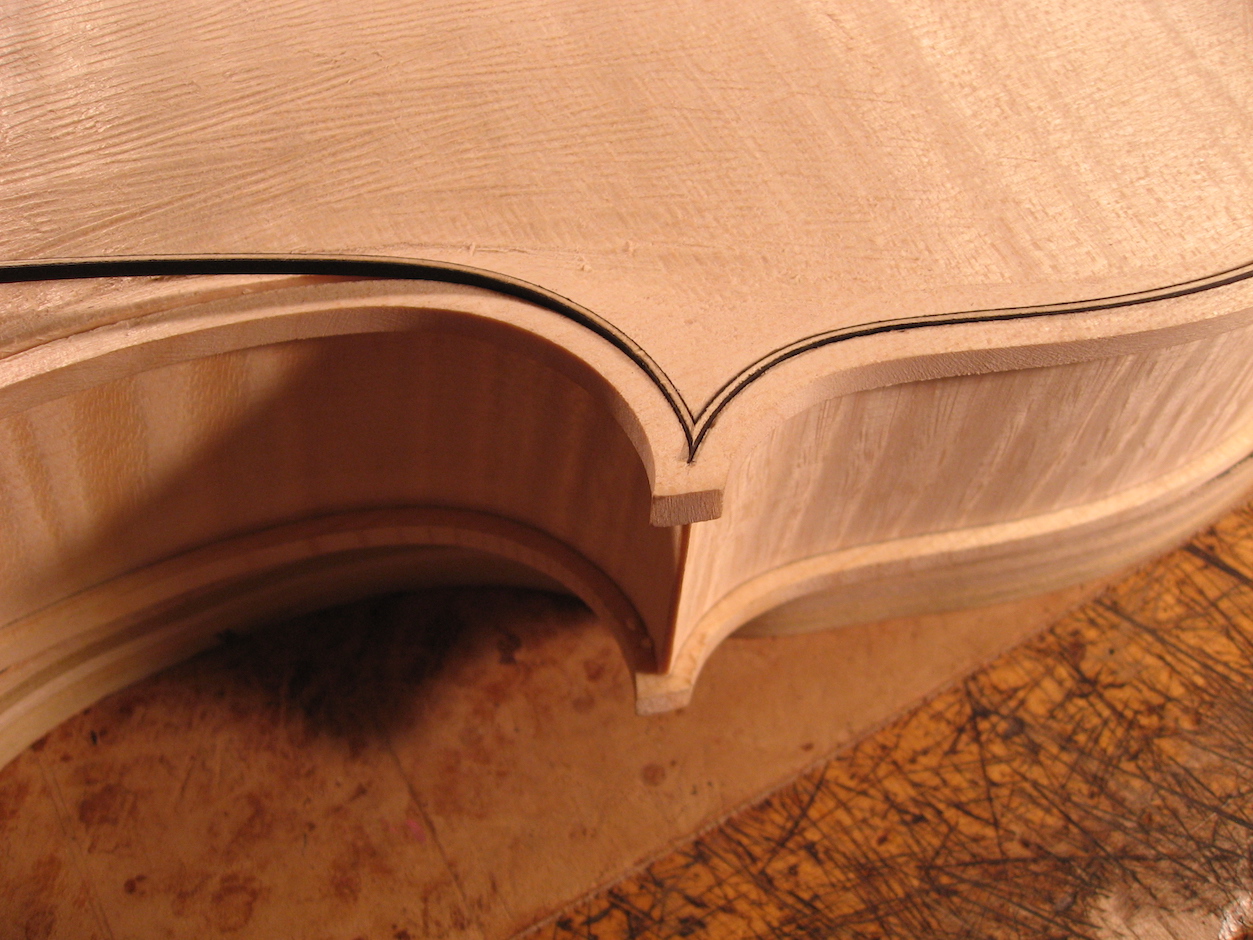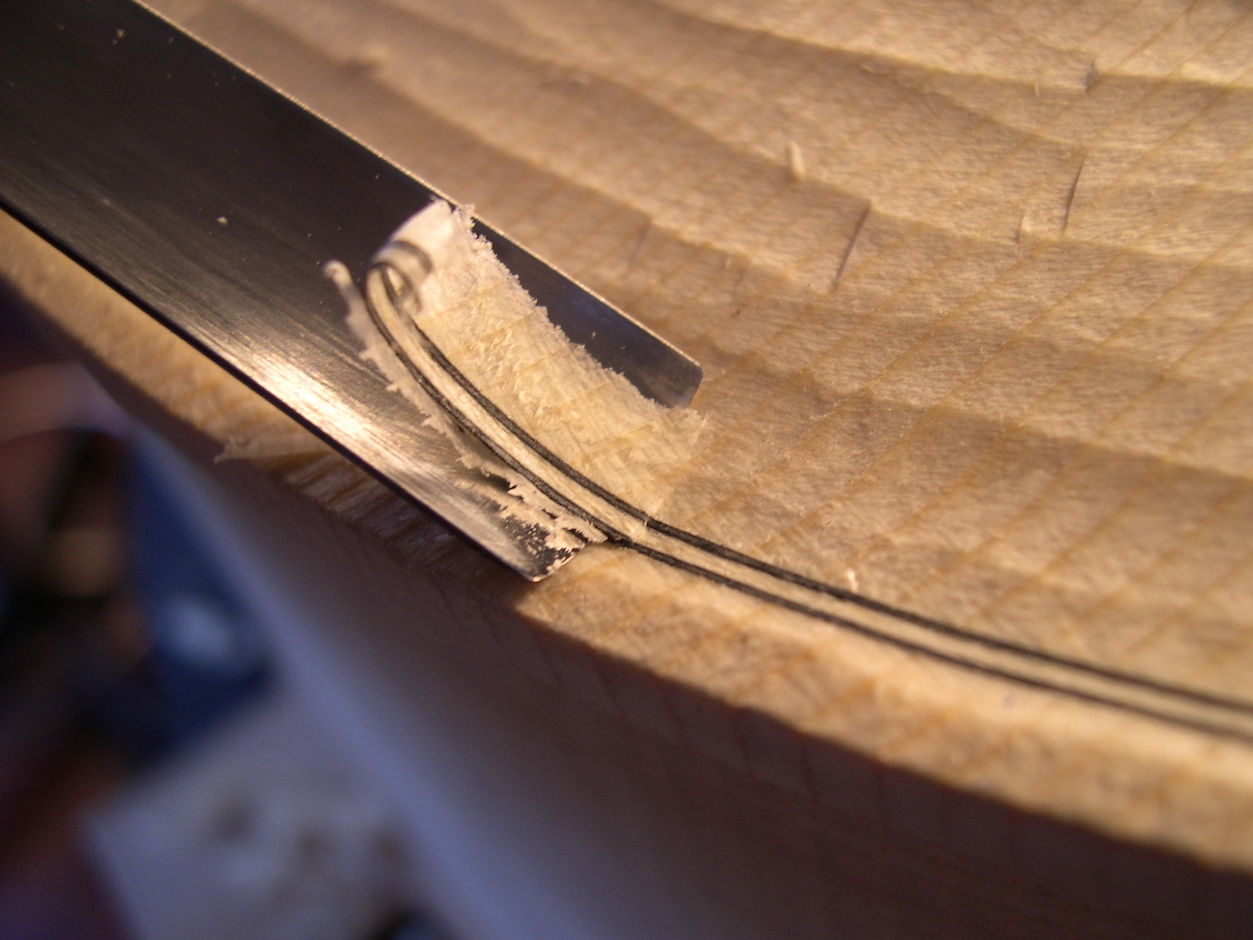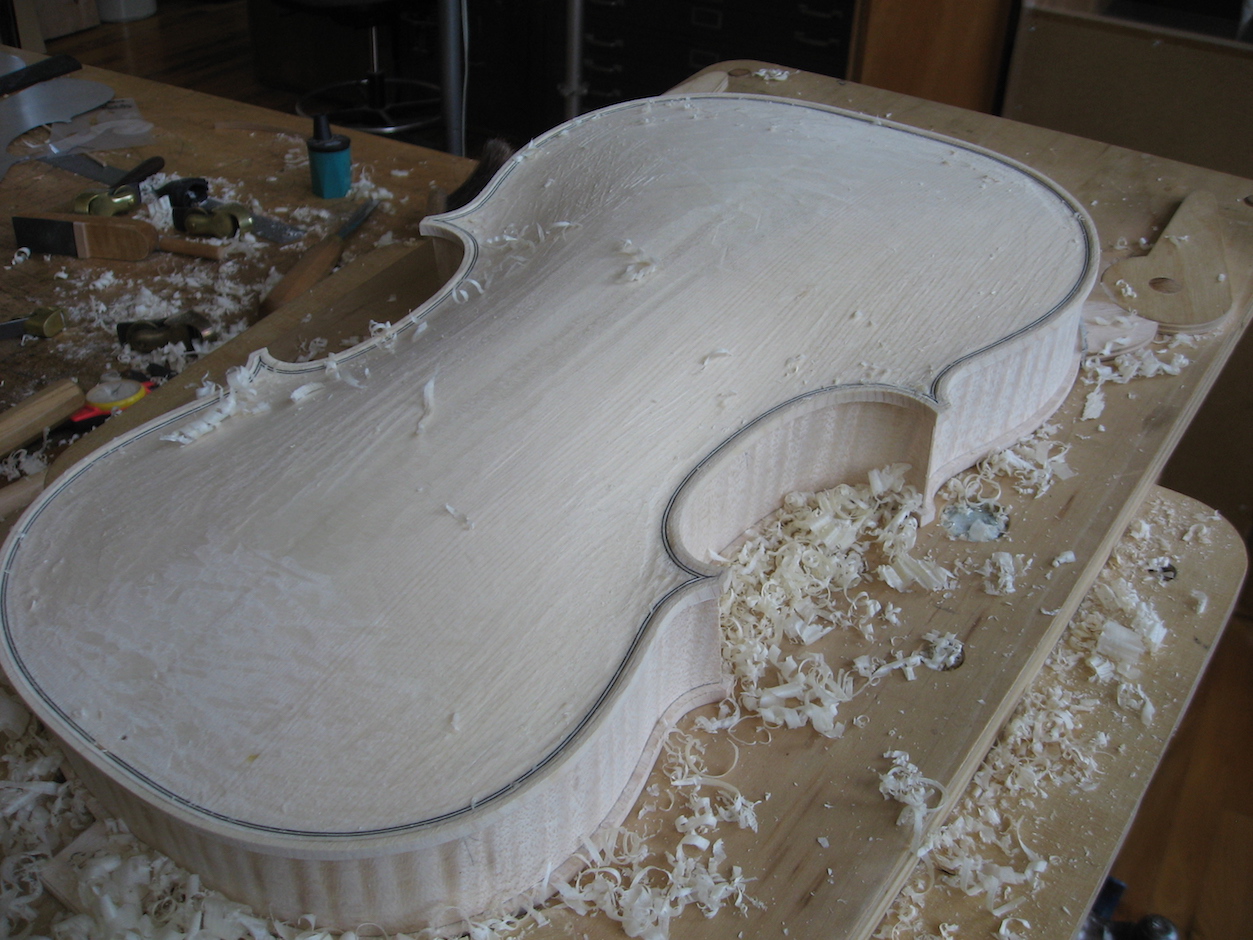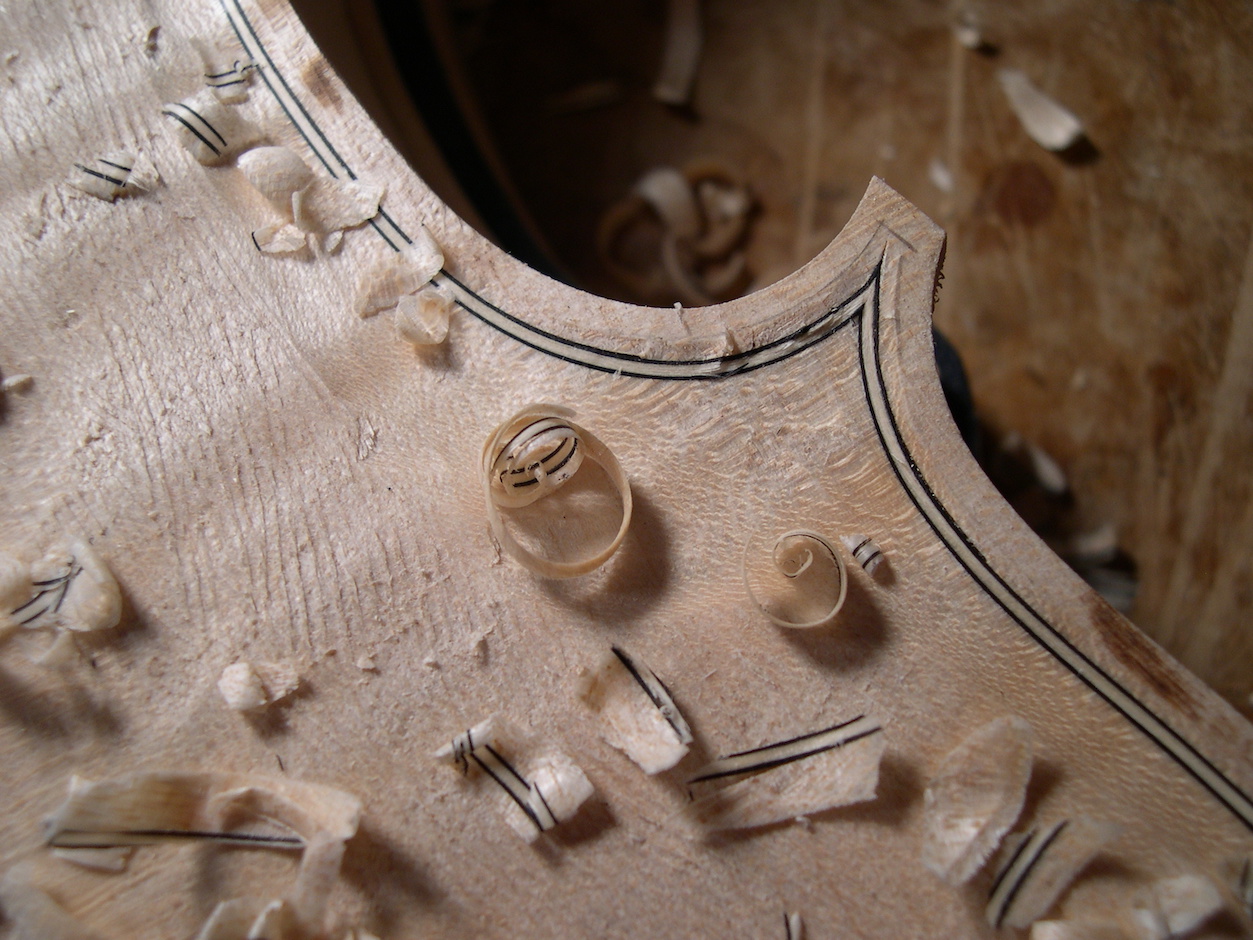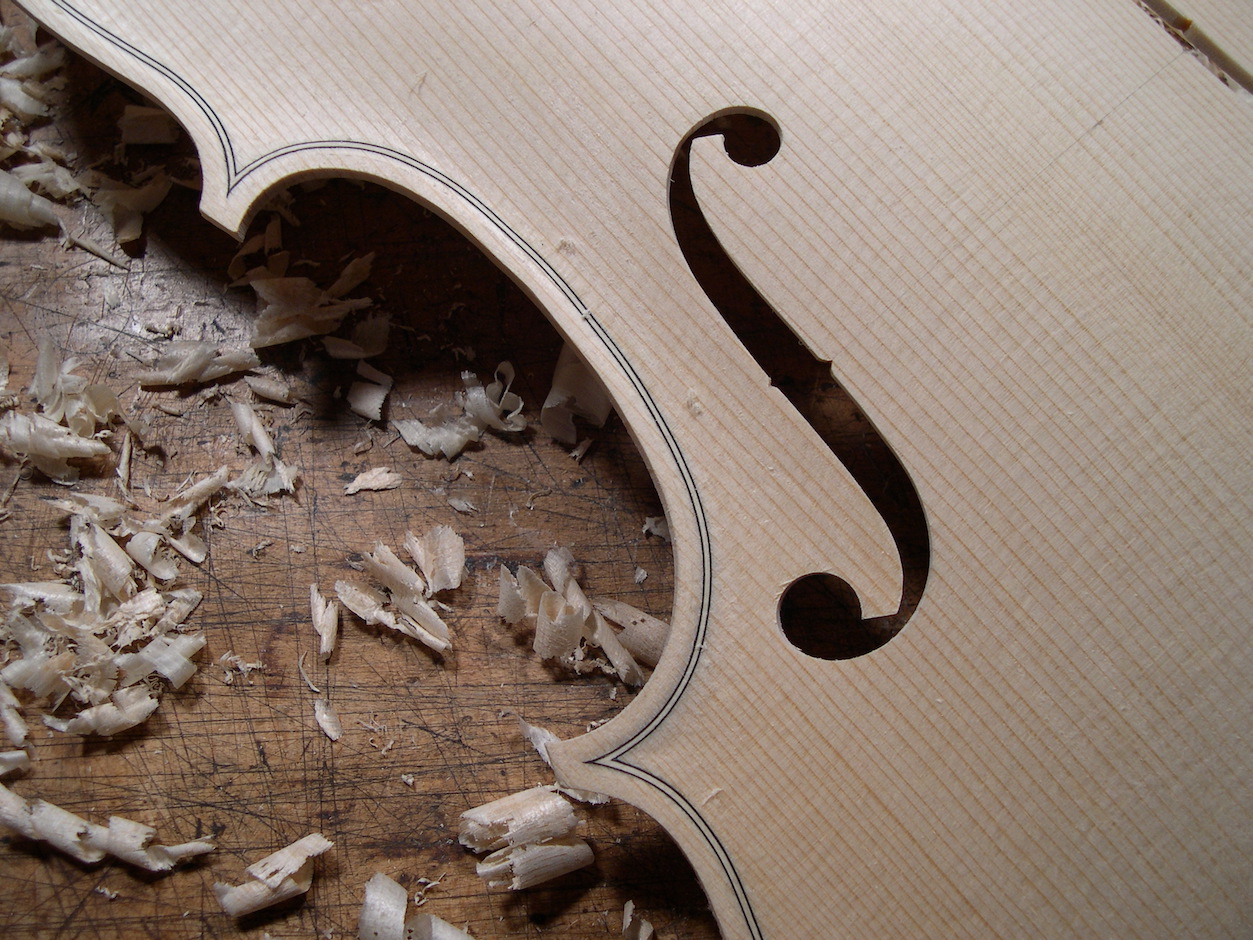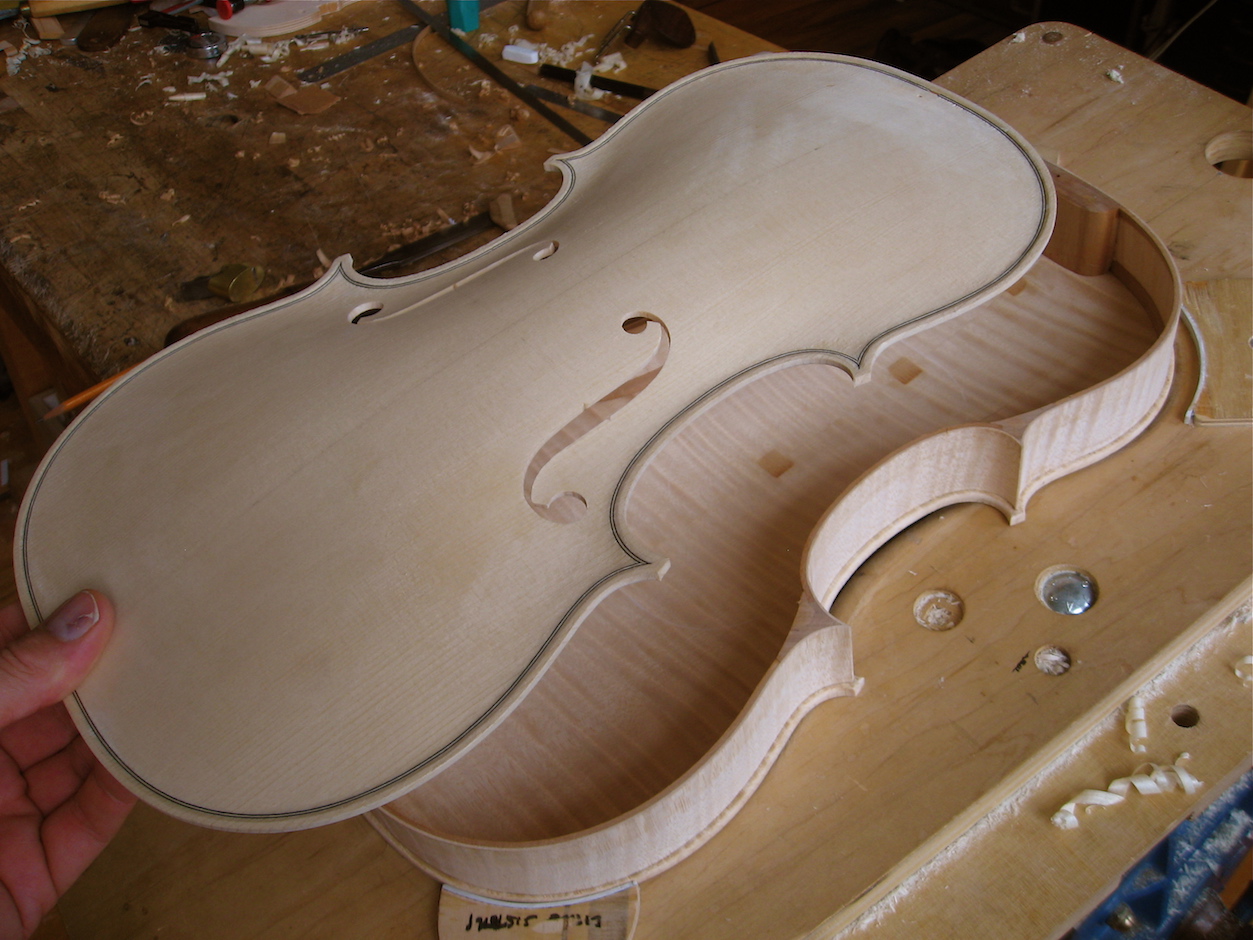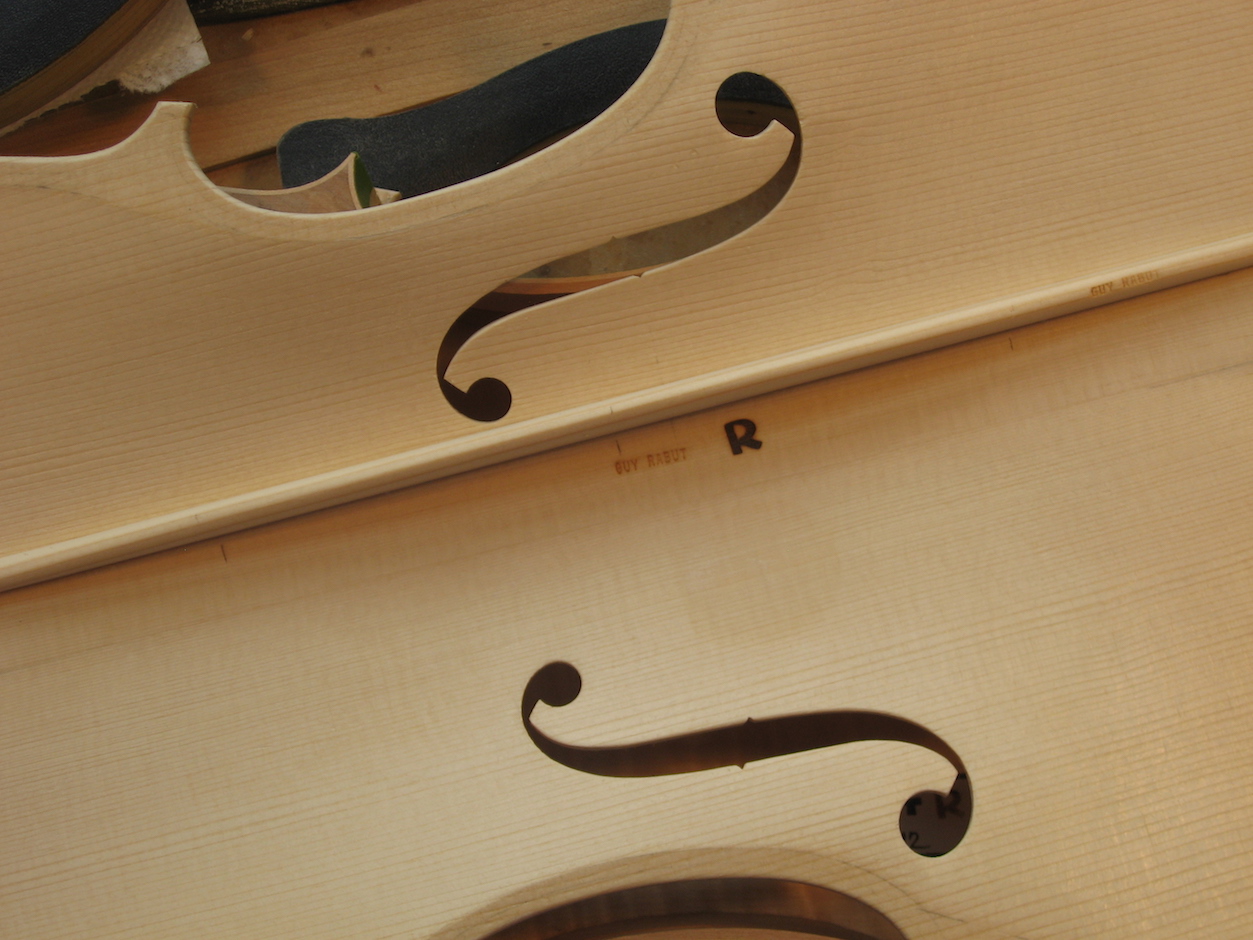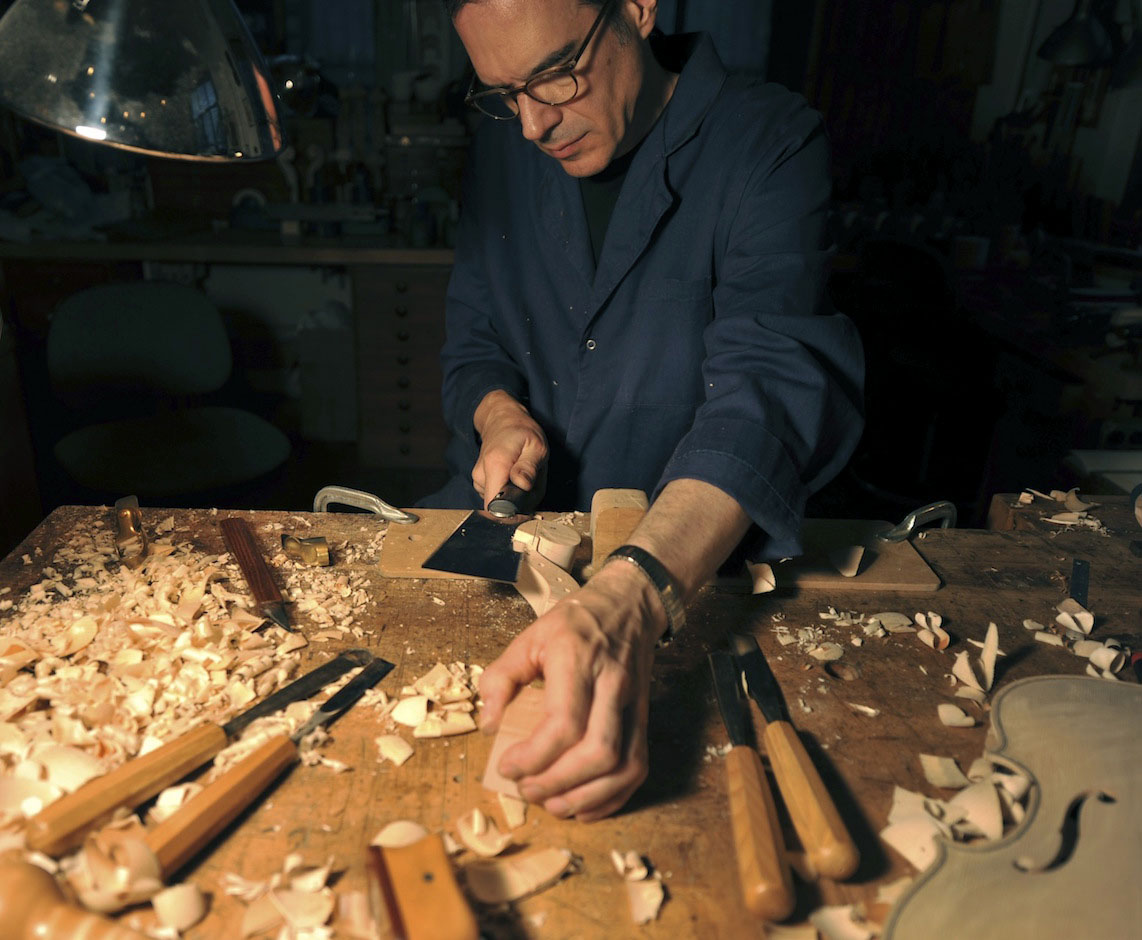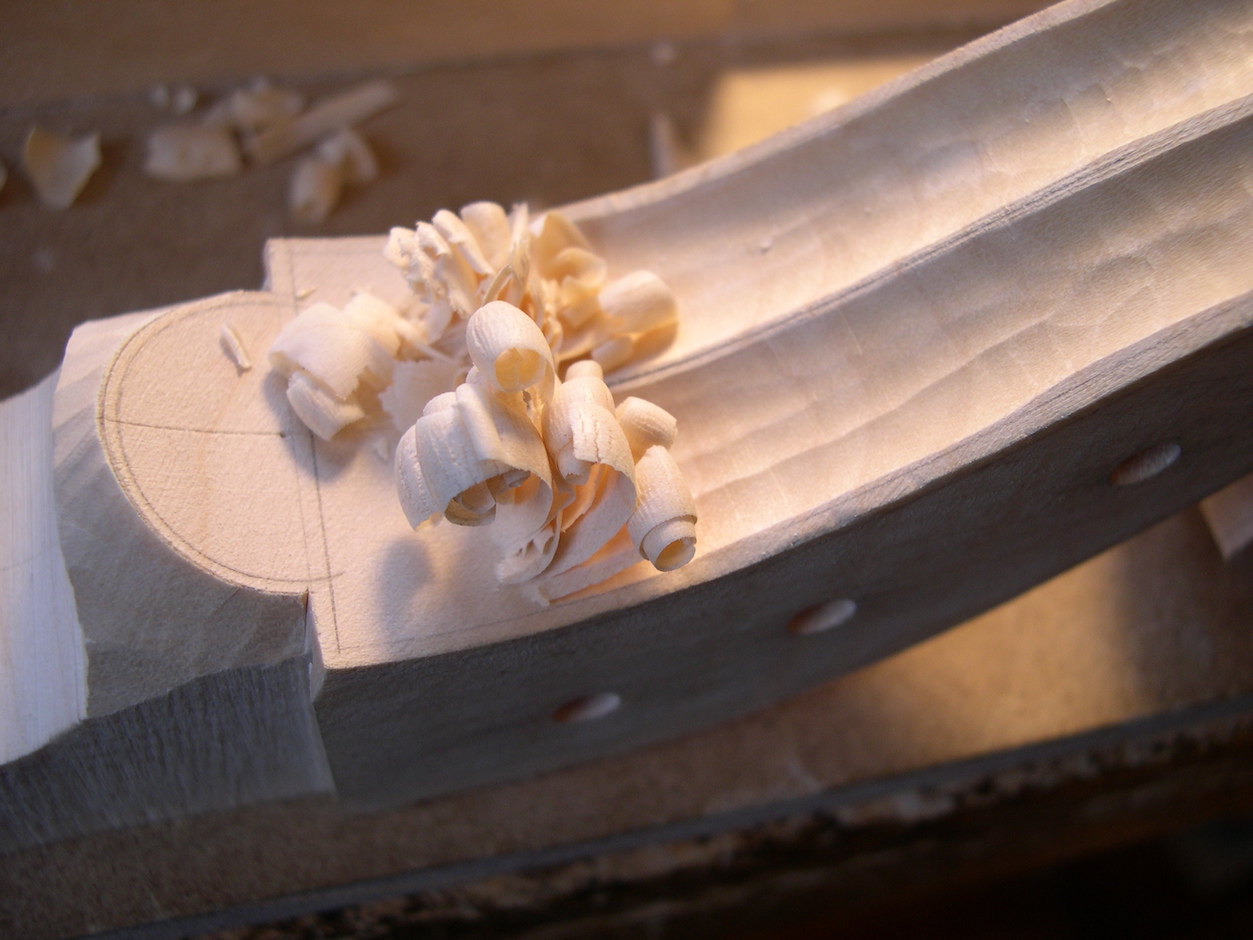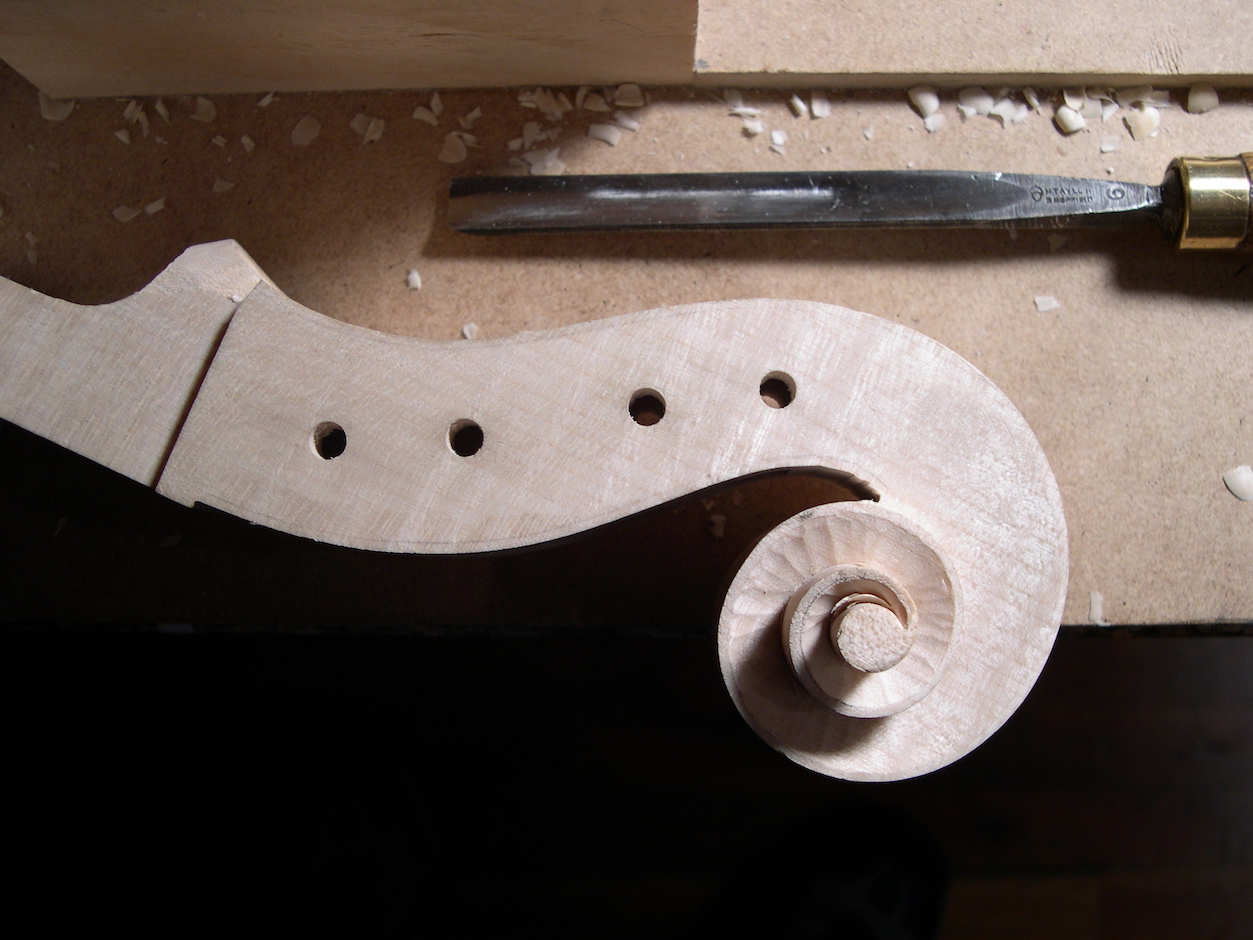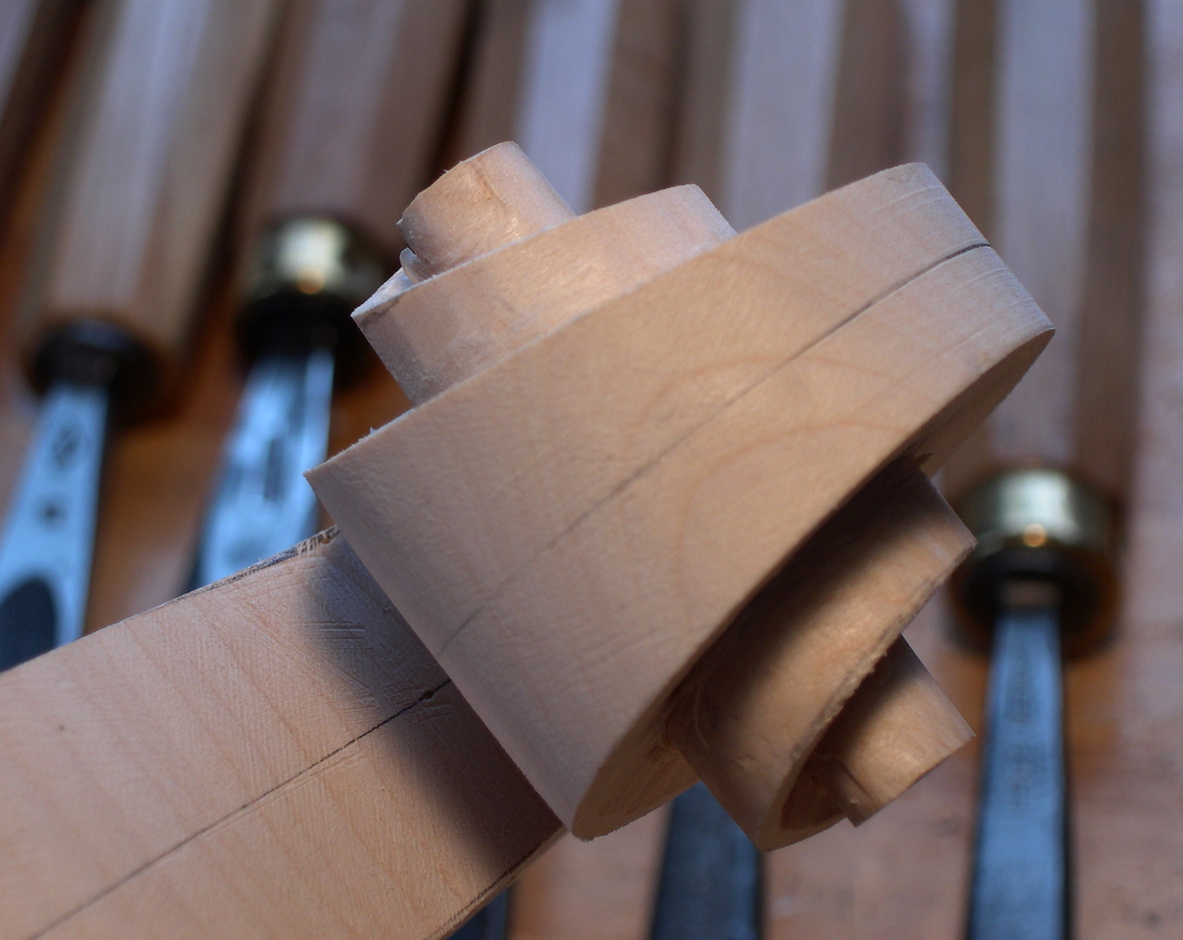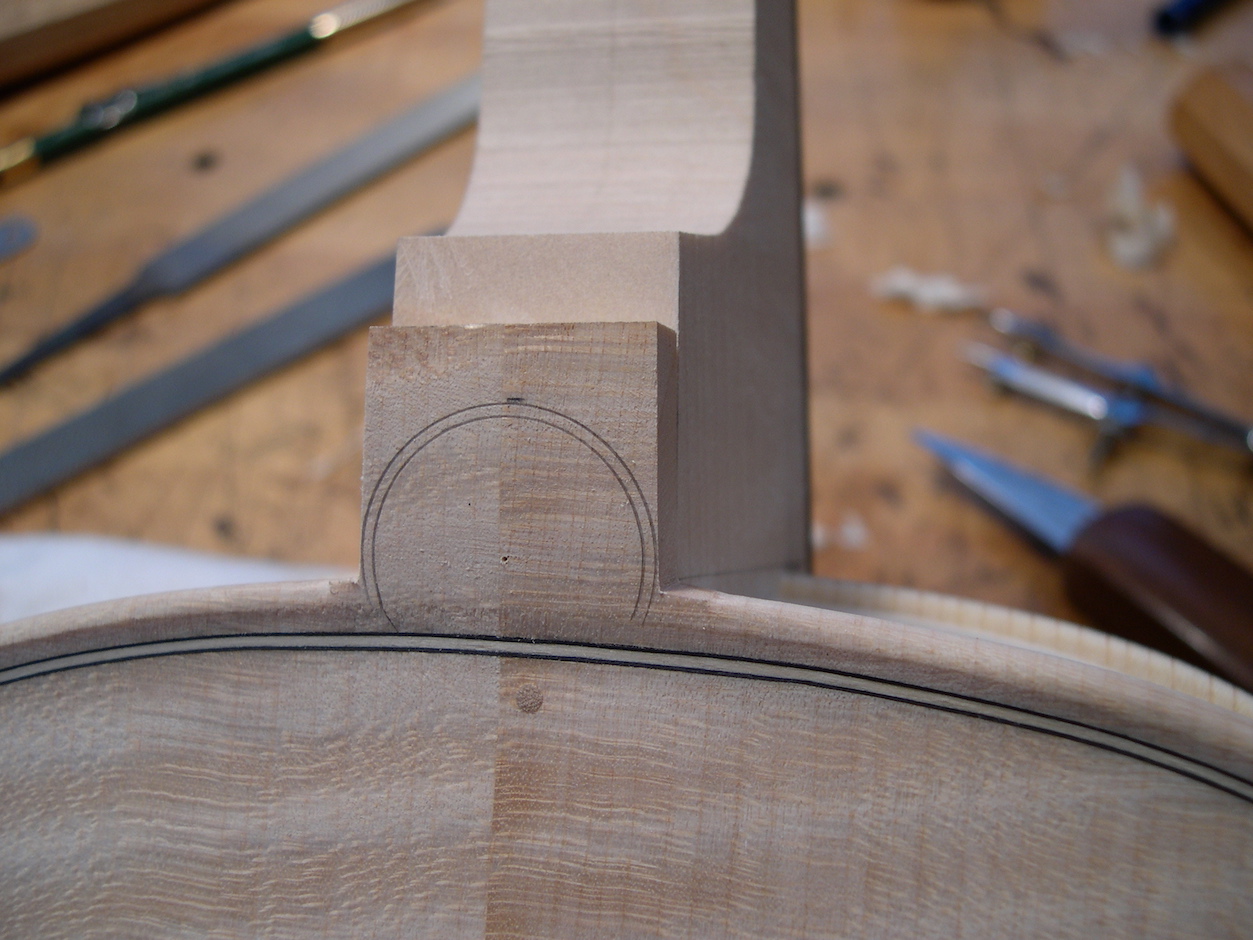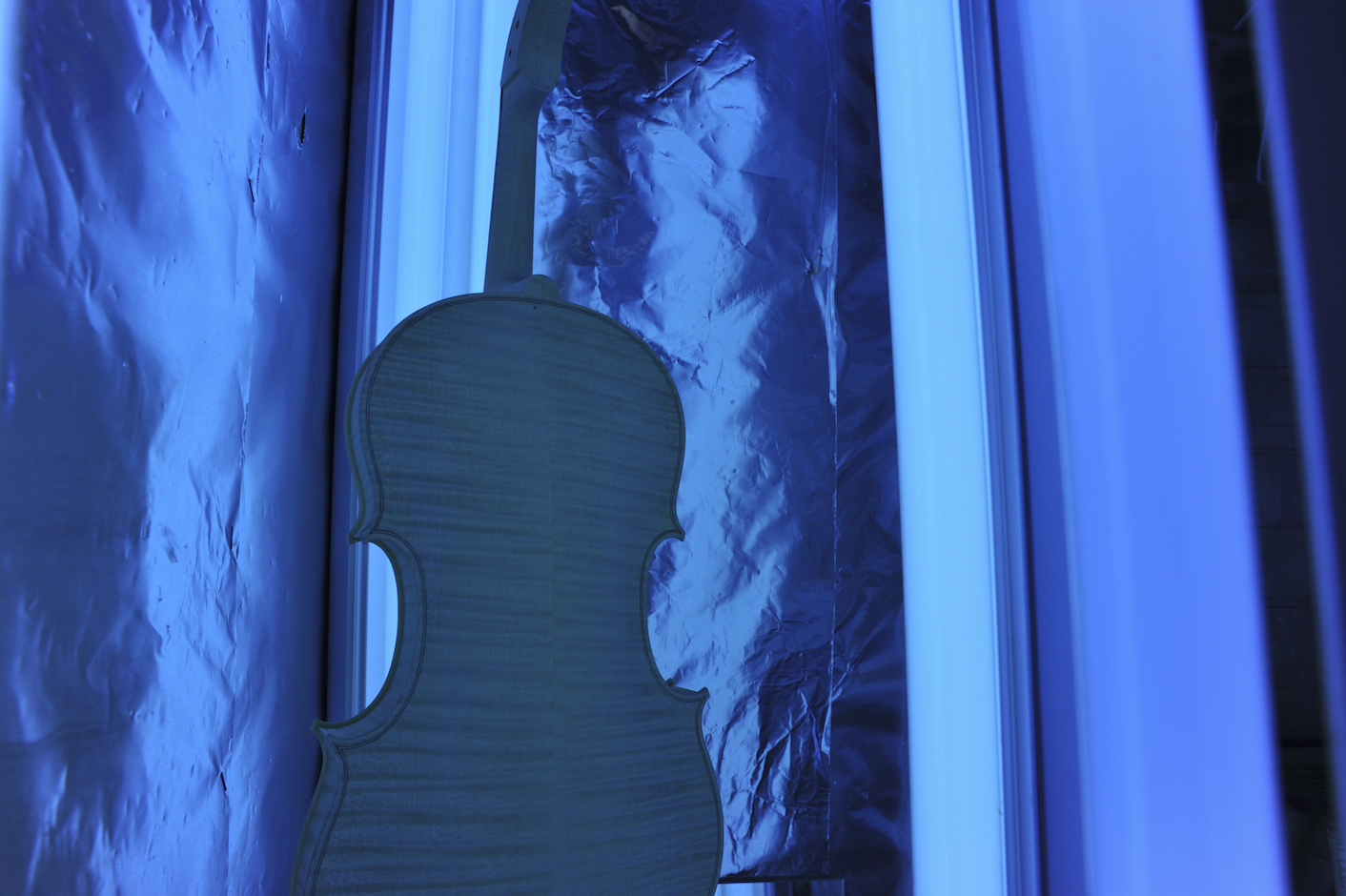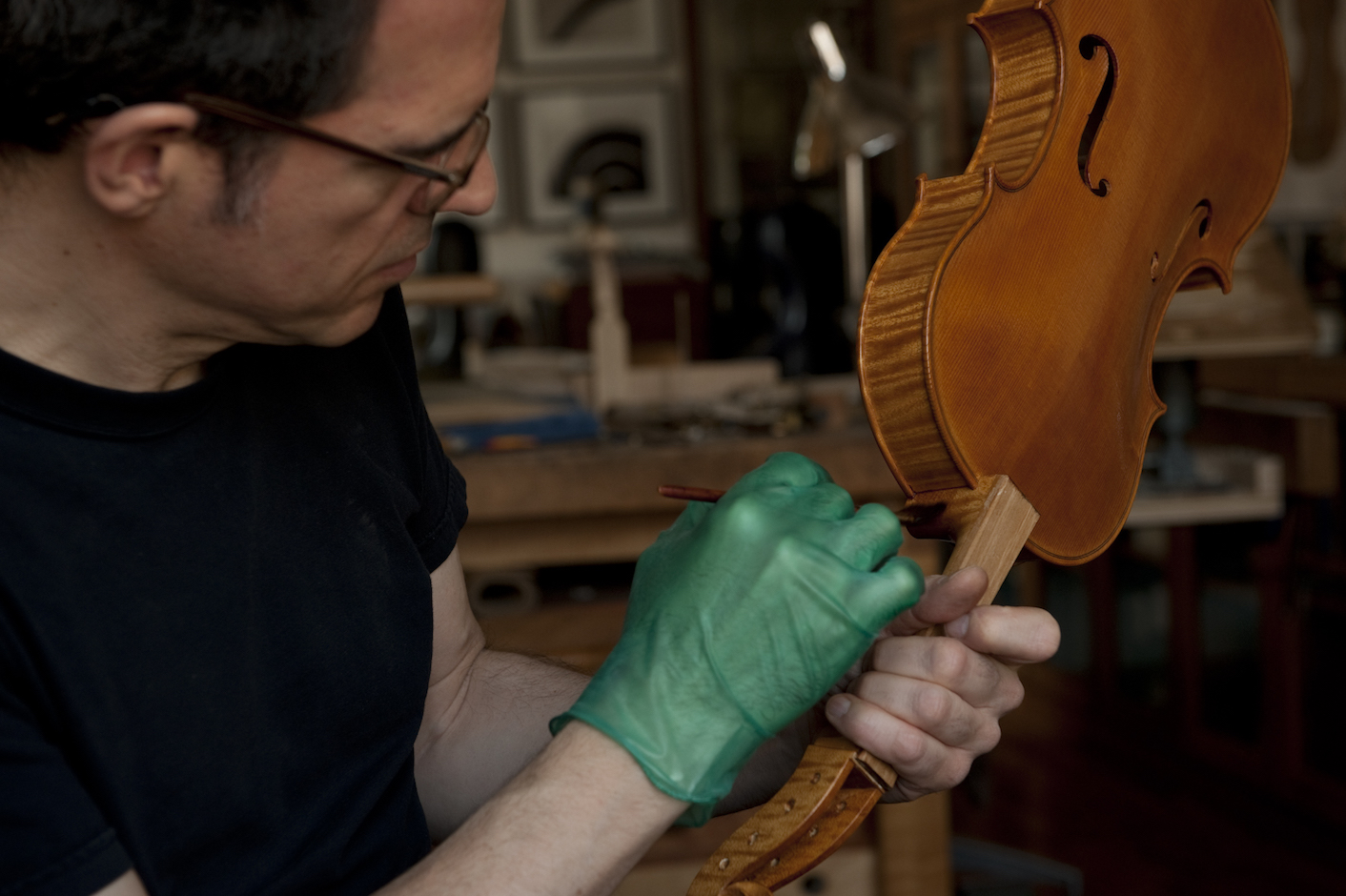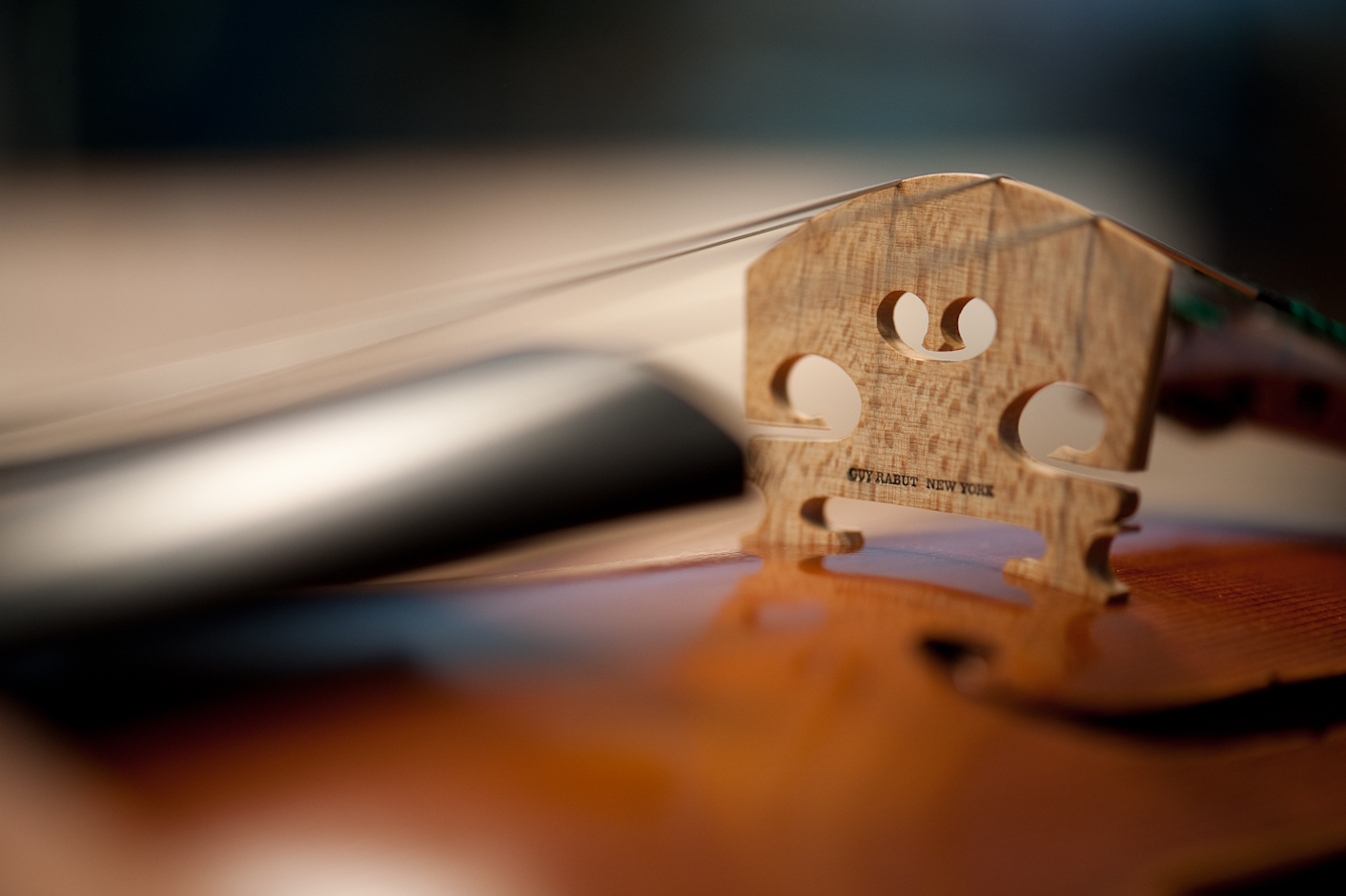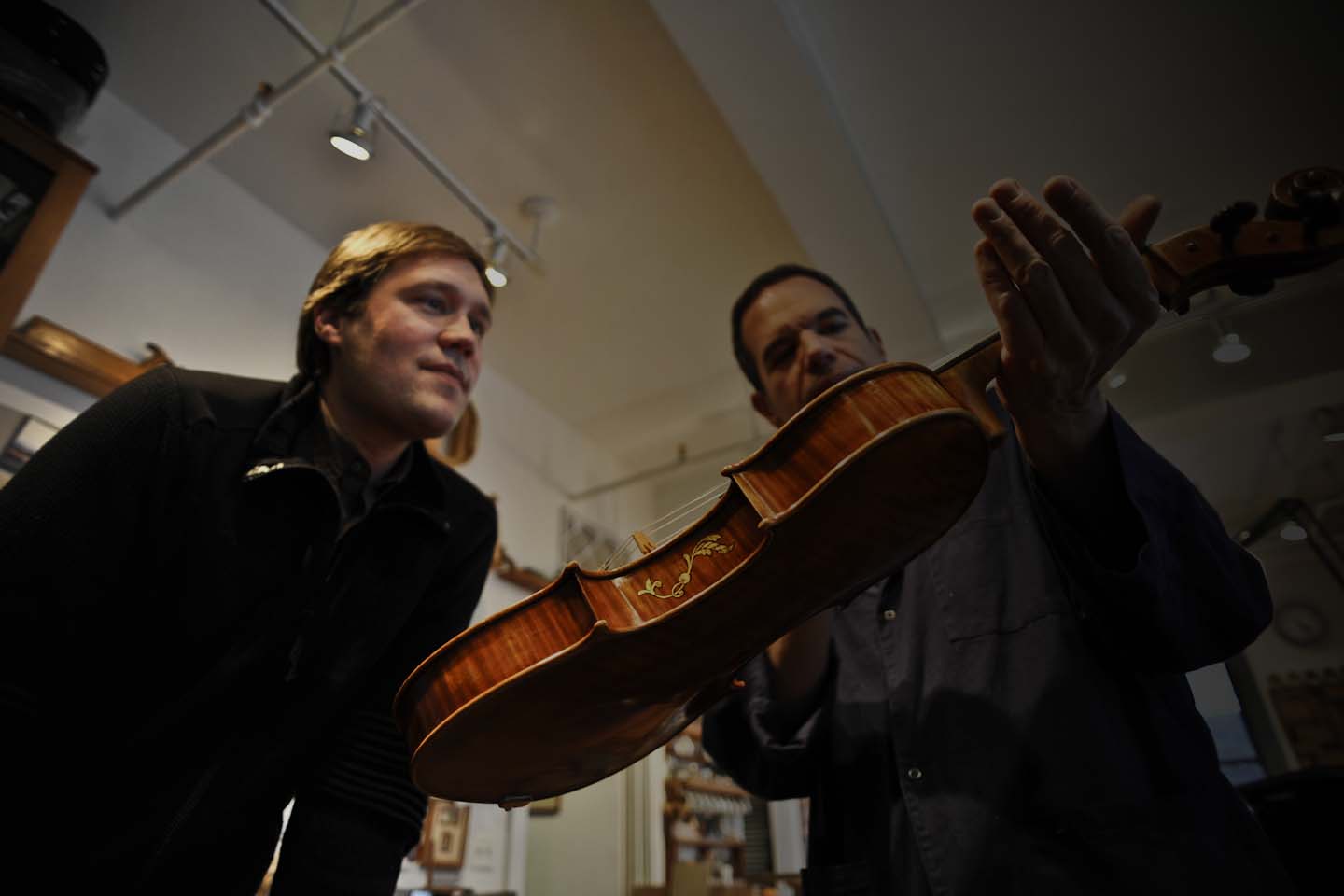SELECTING THE WOOD
I have spent over thirty-five years traveling across Europe and North America searching for the perfect wood with which to make my instruments. The selection process often involves looking through several thousand pieces just to find the few pieces that have all the qualities to make a truly first class instrument. Each piece of wood must be handled and evaluated individually to determine the type of sound that it will produce. As I slide my hands across the surface and tap each piece lightly, it is remarkable the amount of acoustical information that is revealed. In addition to selecting wood that is acoustically superior, I also look for wood with strikingly beautiful grain patterns to further enhance the visual impact of each instrument. I am extremely fortunate to have acquired an extensive selection of exceptional wood, properly aged and ready to become the next violin, viola, or cello.
There is nothing quite like a violin maker’s workshop to evoke a sense of mystery, almost a journey back through time to the Golden Age of violin making in Cremona. The aromas of varnish and old wood prevail to further enhance the atmosphere. Many of the tools I use are hand-made by me to accomplish each special task in the same manner as they were used by the makers of the past. The finest wood from Europe and North America seasons patiently in the wood loft, each piece waiting its turn to become the next violin, viola, or cello. Every instrument begins with an extensive process of design and research in order to achieve the desired acoustical and aesthetic goals. Then the wood is selected from a precious stock of well aged spruce and maple and the construction process begins. When the woodworking is complete, the instrument spends several weeks in the varnishing process before beings strung up and adjusted and then it is ready for it’s first meeting with a musician. I have always worked alone to create each instrument from start to finish. Every instrument is the product of one mind and one pair of hands throughout the entire creative process.
No conversation about the creation of a new violin, viola or cello would be complete without some discussion of the varnish. Few subjects have been so surrounded by mystery, myth, and mystique. After many years of research and development, using ancient recipes and historically available materials, I have formulated a varnish which recreates the qualities of the true classical Italian varnish. This varnish has the remarkable optical properties required to impart a vibrant glow to the wood, and the acoustical structure to enhance the instrument’s natural voice.
COMMISSIONING AN INSTRUMENT
Commissioning an instrument can be a very exciting and rewarding experience. The process begins by selecting a model for the commission. This involves defining the tonal objectives required. You may have seen a Rabut instrument played by a colleague that you were attracted to and desire one similar. In the case of a viola there is also the important question of size to consider.
Each model by virtue of its proportions and dimensions has a characteristic voice. The fundamental sound qualities of each model become the conceptual foundation from which to begin the commission process. Guided by many years of experience and referring to my extensive archive of historical materials, I will take your vision and create an instrument that will meet your personal requirements. For the most part I draw my inspiration for the models I use from the classical Italian instruments made in Cremona, Brescia and Venice before 1750. Because the instrument will be made to your specifications, I will also make every effort to accommodate your preferences for a particular grain pattern in the choice of wood for the back.
If you would like to explore the option of commissioning an instrument, please contact me and we can begin the conversation.
Violin
Stradivari and Guarneri del Gesu are generally the models of choice for violins. The Guarneri model lends an athletic quality to the sound while the Stradivari model tends to be smoother and more refined.
Of course there will be variation from these general concepts depending on the choice of wood, type of arching, and plate thickness.
Viola
The viola affords much greater latitude of choice in selecting a model. Often the most successful violas are a carefully orchestrated synthesis of several different acoustical ideas integrated into one. By preserving a broad chest area across the center of the viola and a slightly fuller arch, I have been able to keep the depth of tone that violists desire while creating a viola that is also very easy to play. For aesthetic inspiration I look to the Brescian school of viola making, following such makers as Gasparo da Salo and G. P. Maggini and to the Cremonese violas of the Amati family.
Cello
Cremona and Venice were the two great cello making centers in Italy in the 1700’s. The Venetian cellos, due to their greater breadth tend to be darker and more mellow. Venice was home to two of the finest cello makers, Goffriller and Montagana. The cellos of the Cremona school feature the tenor voice in the cello spectrum. In Cremona, Stradivari along with the protégées of the Amati shop provide plenty of guidance and inspiration. As a cellist, I have a special connection to the voice of the cello and for the exploration of the range of colors that can be produced.





